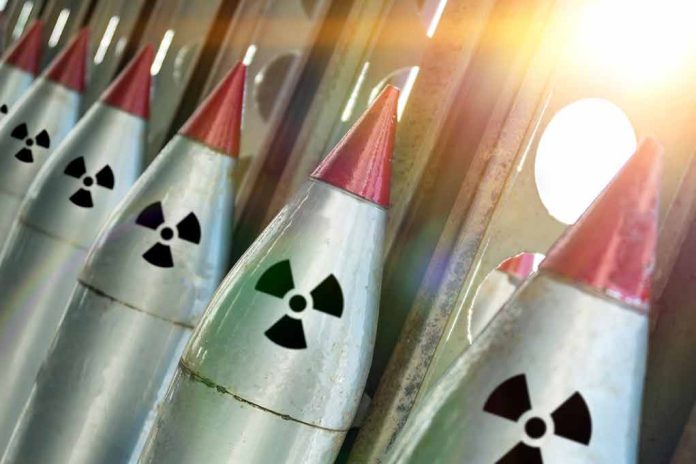
Putin’s return to a Cold War-era strategy with the revised nuclear doctrine heightens the West’s concerns as global tensions surge.
At a Glance
- President Vladimir Putin has approved an updated nuclear doctrine for Russia, aligning with NATO’s collective defense principle.
- The new policy emphasizes nuclear deterrence against potential enemies and considers nuclear weapon use an “extreme measure.”
- The doctrine prioritizes deterring aggression against Russia and its allies, ensuring adversaries understand the inevitability of retaliation.
- Russia commits to reducing nuclear threats and preventing military conflicts, including nuclear ones.
- The updated guidelines were introduced in response to perceived threats from Ukraine and its allies.
Revised Doctrine: A Bold Declaration
Russian President Vladimir Putin has formalized the revised nuclear doctrine, reflecting escalating tensions between Russia and the West. This doctrine introduces conditions under which Russia may consider employing nuclear weapons. The shift coincides with increased Western support for Ukraine, including U.S. approval for Ukraine to utilize long-range missiles, a move perceived by Moscow as a direct threat.
This timely alteration of Russia’s nuclear policy aims to counteract these emerging threats and mirrors NATO’s collective defense posture. By aligning its approach with NATO’s, Russia sends a clear signal that any aggression against Moscow or its allies, notably Belarus, could trigger a nuclear response.
Putin signs revised doctrine lowering threshold for nuclear response if Russia is attacked https://t.co/6uZu3f6Ke7
— Fox News (@FoxNews) November 19, 2024
Deterring Aggression: Nuclear Doctrine’s Core
Central to the updated Russian nuclear doctrine is the emphasis on deterring potential aggressors. As Moscow faces what it perceives as external threats from Ukraine and its allies, it is poised to make its resolve unmistakable. While the doctrine permits retaliatory action if Russia suffers large-scale missile attacks, including airstrikes from ATACMS and similar systems, it does not guarantee a nuclear response.
“President Vladimir Putin has approved Russia’s updated nuclear doctrine to share the country’s nuclear deterrence with its allies — mirroring NATO’s “attack on one member is an attack on all” doctrine.” – President Vladimir Putin.
This vagueness underlines the uncertainty surrounding the scale, time, and place of potential nuclear deterrent use. Furthermore, the doctrine delineates scenarios wherein nuclear responses could ensue, such as aggression supported by a nuclear-armed nation.
President Vladimir Putin said Russia will revise its nuclear doctrine to include a response to “aggression” by non-nuclear states that is supported by other nuclear powers (translation via AP) https://t.co/BLw14Zxt0l pic.twitter.com/0iWkf8f5G7
— Bloomberg (@business) September 25, 2024
Anticipating Unsettling Implications
While the doctrine is seen by some experts as non-drastic, its implications are unsettling. Mariana Budjeryn of Harvard Kennedy School notes this is not a “drastic” change, but the threatening language presents a different narrative. It underscores the unpredictability and severity of potential military engagements involving Russia.
Ultimately, Putin’s decision on this revised doctrine occurs against a backdrop of complex geopolitical turmoil. It demands keen attention from the international community, which remains wary of missteps that could ignite wider conflicts.






















